

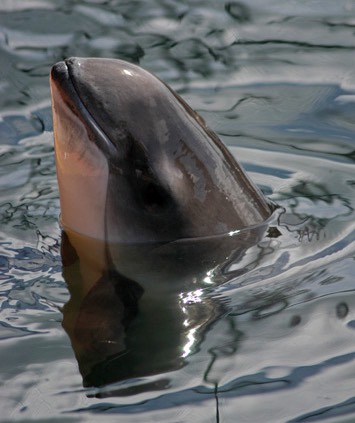
As harbour porpoises (Phocoena phocoena) are usually rather difficult to photograph in the wild, we decided to use some time off to visit the Fjord & Bælt Centre in Kerteminde, eastern Denmark (www.fjord-baelt.dk). On the way we tried looking for wild porpoises, but it was way too windy to stand any chance of spotting one of these common, yet elusive creatures.
The Fjord & Bælt Centre consists of an aquarium and two natural inlets that were fenced of from the fjord. The innermost basin held four common seals (Phoca vitulina) and the other one two porpoises; a female, Freja, and a male, Eigil. Both porpoises were rescued from pound nets and are now participating in research into harbour porpoise acoustics and ecology. We spent most of the morning watching them do their rounds and observing the typical harbour porpoise surfacing pattern with a quick roll just before diving again.



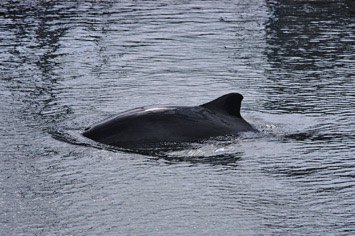
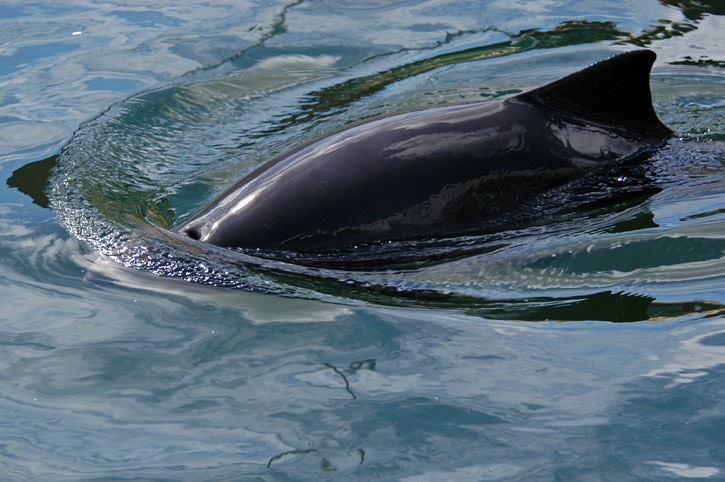
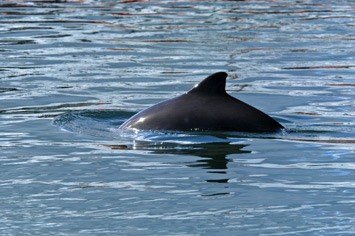



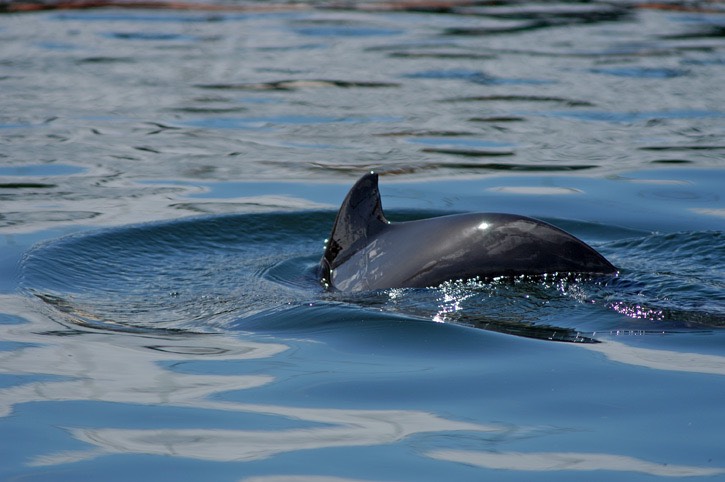
As the water was reasonably clear, it was even possible to follow the porpoises underwater, allowing us to view more of their bodies than one normally sees at the surface. Sometimes they resembled ghosts coming to the surface from the depths of the sea! This also helped us to be ready to take photos as the porpoises surfaced and capture their blow holes and even the occasional mini blow!
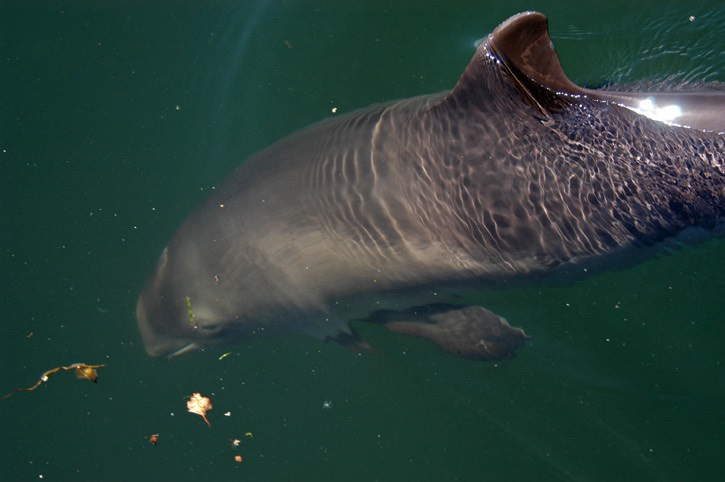


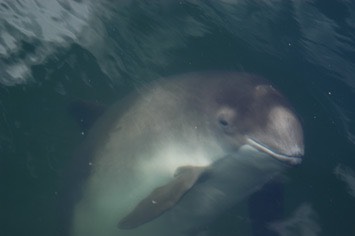


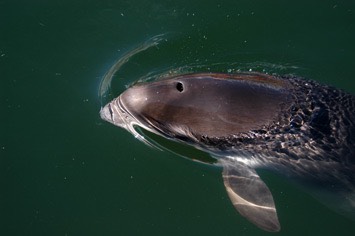

Every day there are two training sessions. First comes the seals' turn. They were asked to haul out on wooden piers, and one of them received some medical treatment for an eye problem. This demonstrates the importance of training the seals to react to the commands and signals of their keepers. They have also been trained to recognise a symbol that is attached to the bucket holding their fishy rewards, so that no seal gets more than his or her fair share.
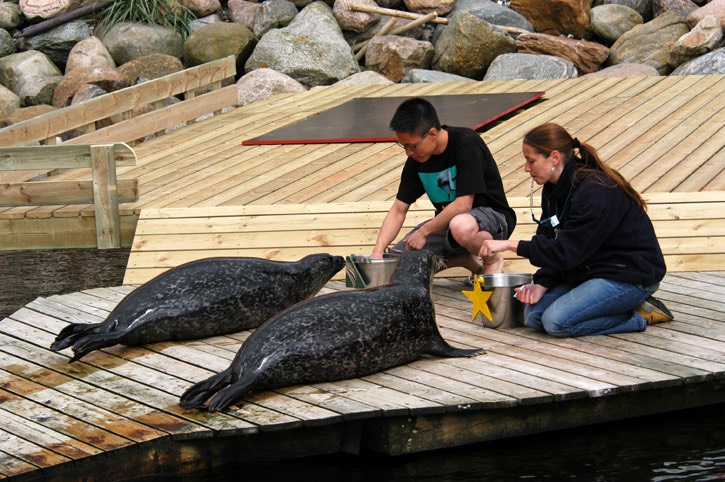
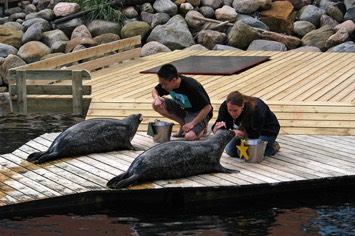
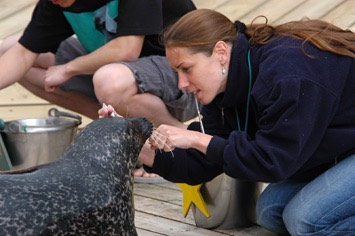

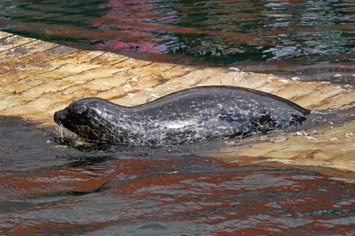
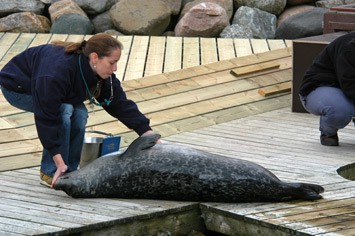

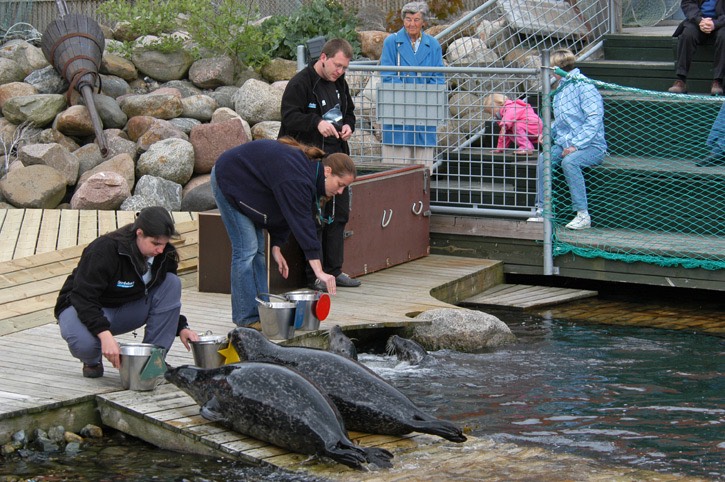
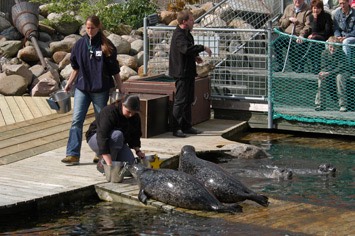

The porpoises also have to react to different hand signals and whistles and are rewarded with fish. Part of the training, like swimming onto a ramp and exposing the whole body, is to allow vets to treat the animals if necessary. While seals regularly haul out on land, it is something that porpoises would not do under normal circumstances. The trainers have a very close relationship with the harbour porpoises and often meet up and interact with them outside the official training sessions. When you see the porpoises next to humans, it makes you realise just how small they are!

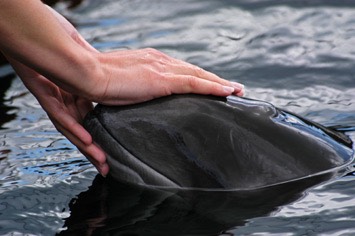

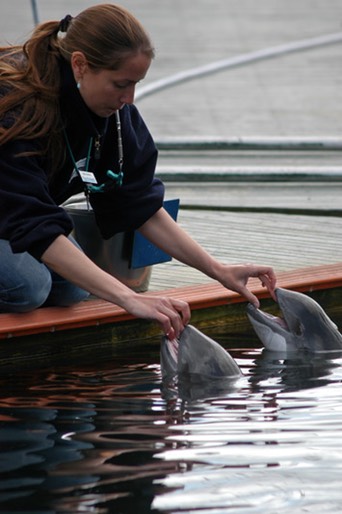





Another female porpoise arrived in the centre shortly after we visited and in 2007 Freja and Eigil became proud parents of little Frigg Amanda, who was apparently the first live born harbour porpoise in captivity.